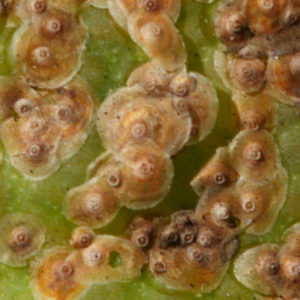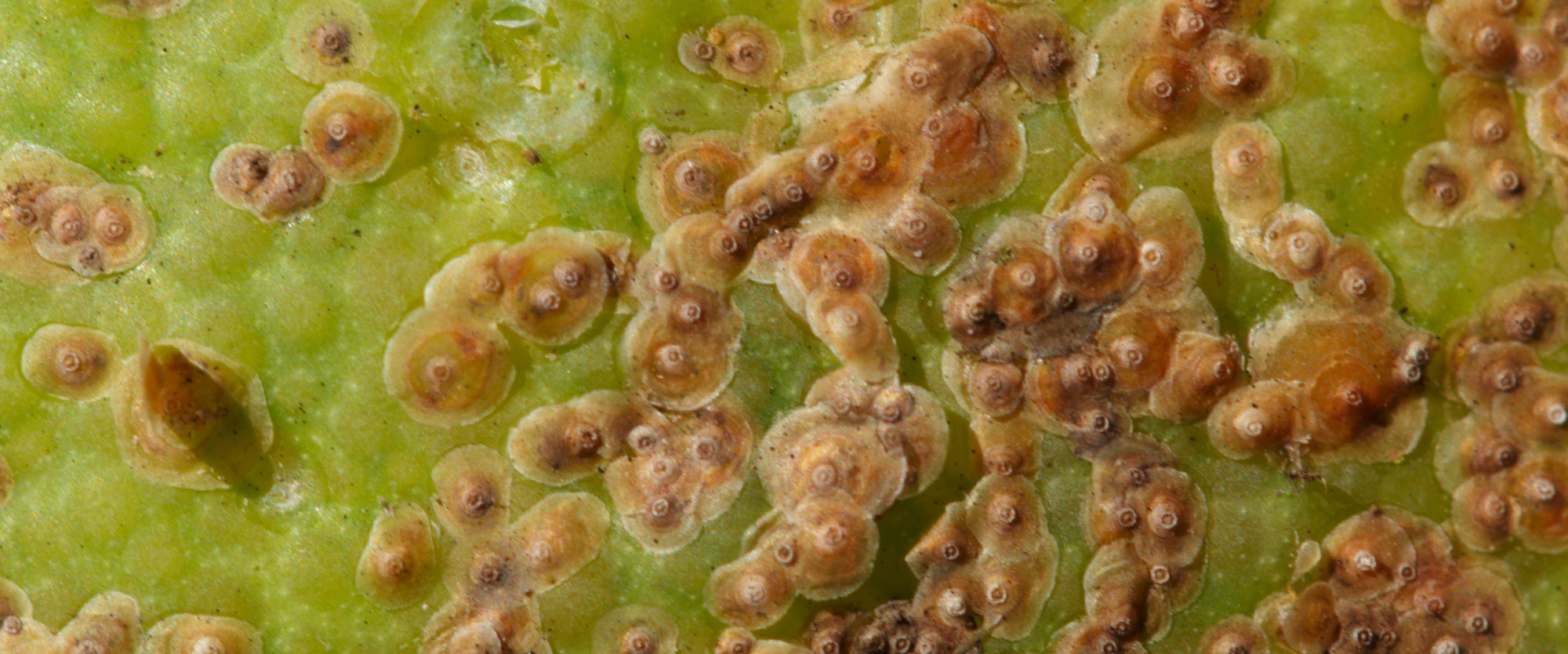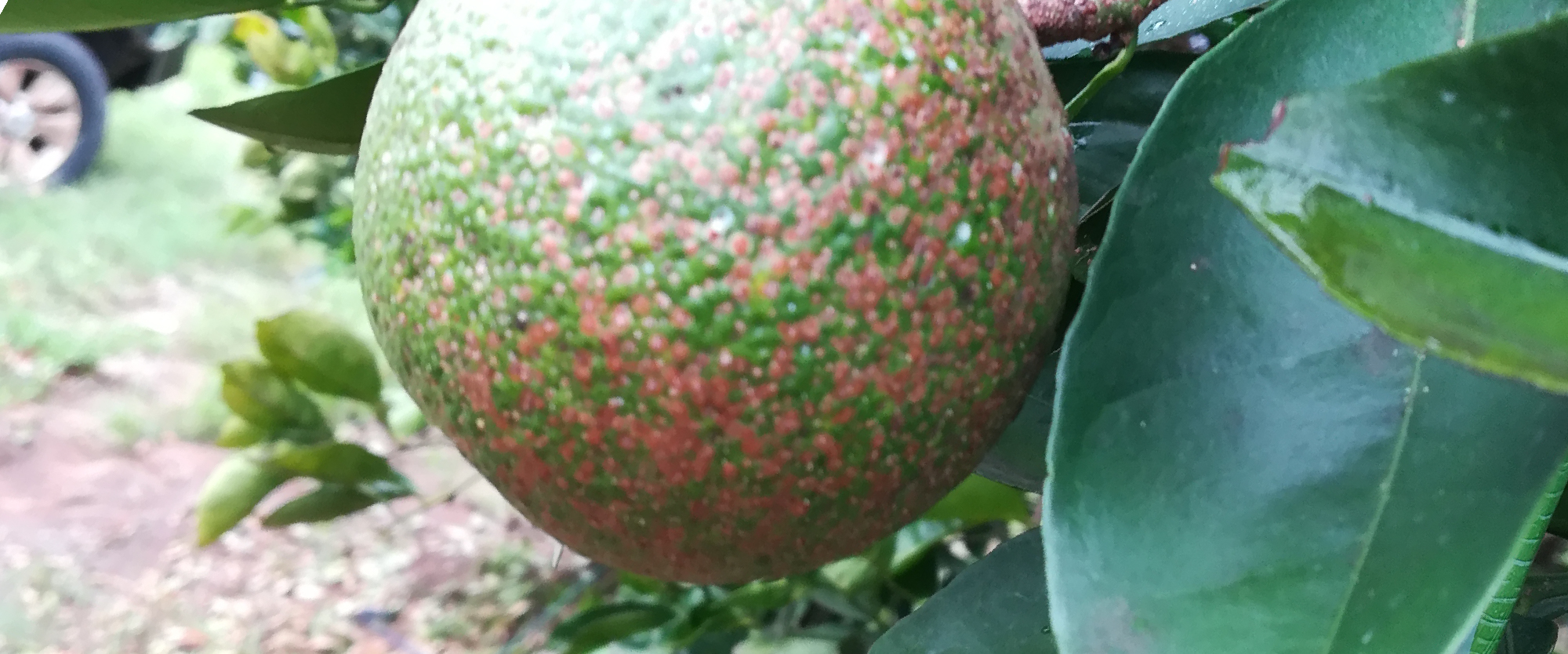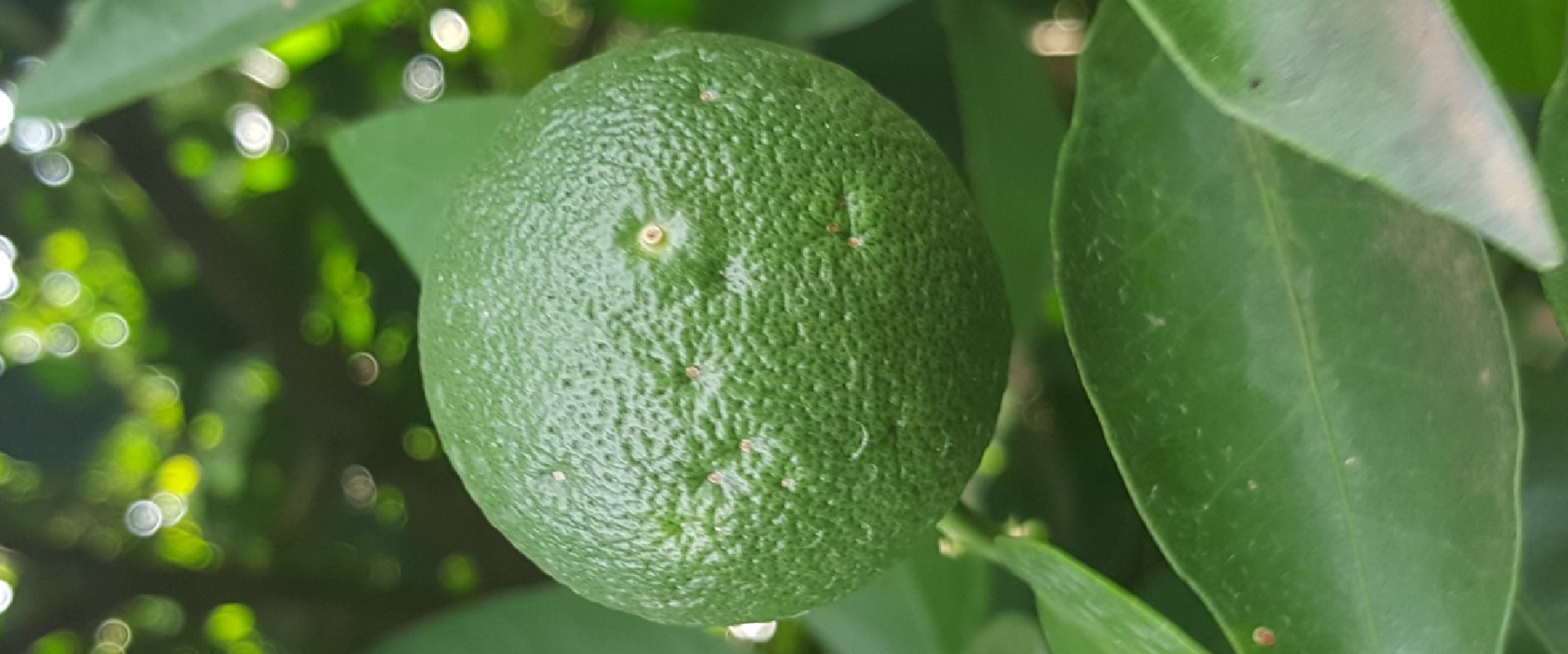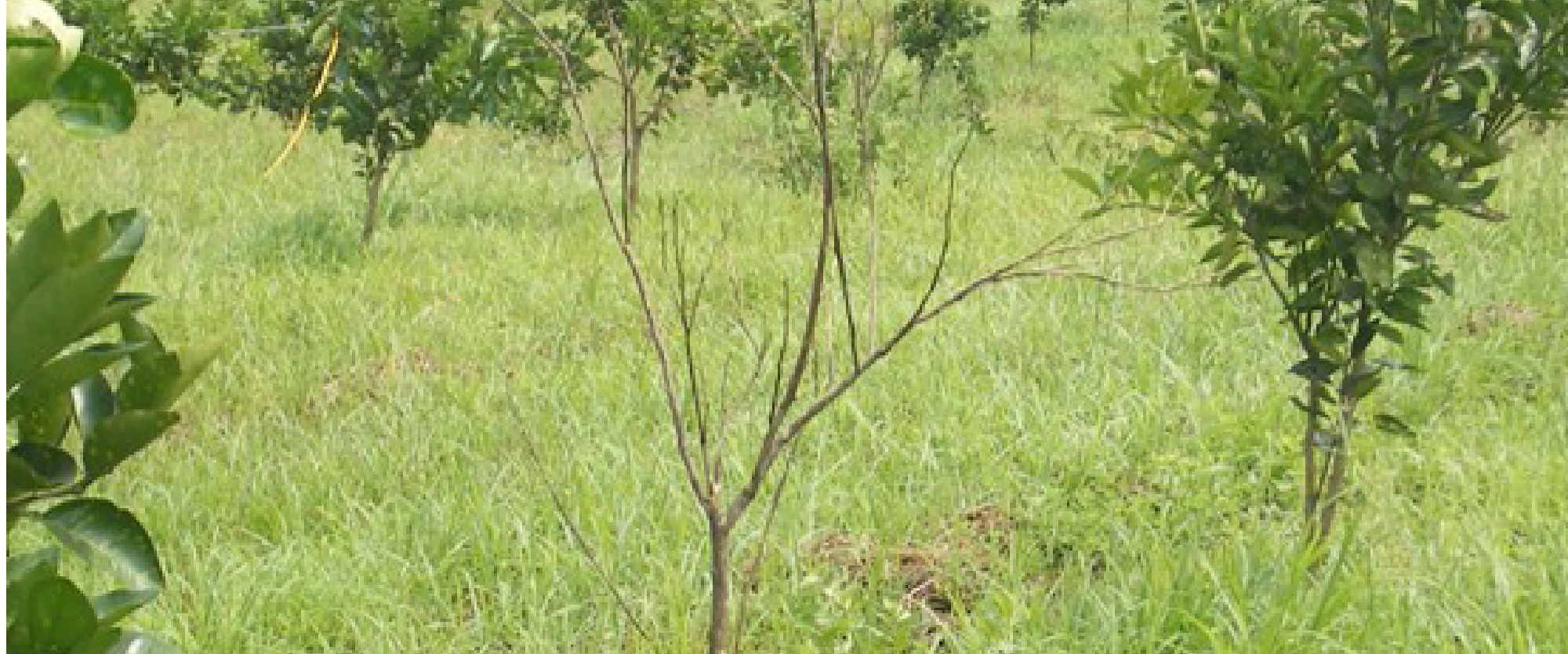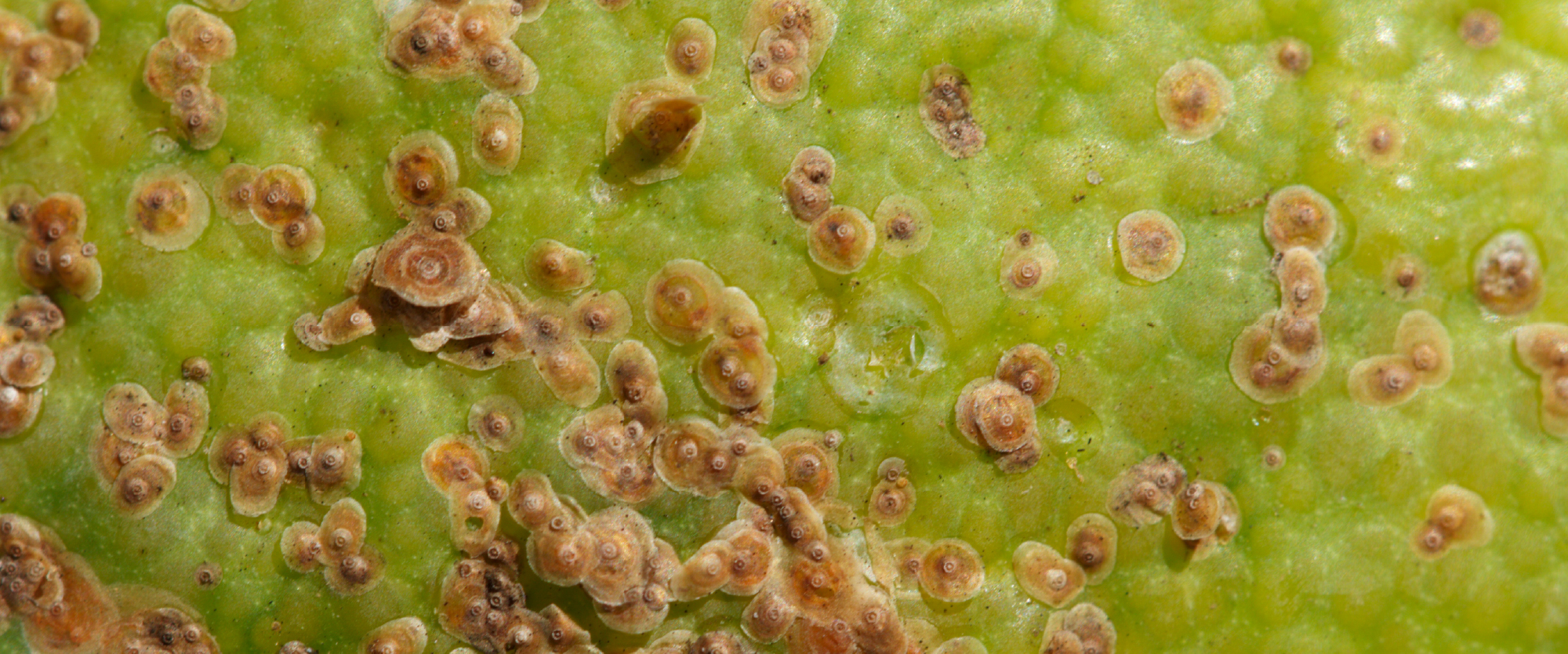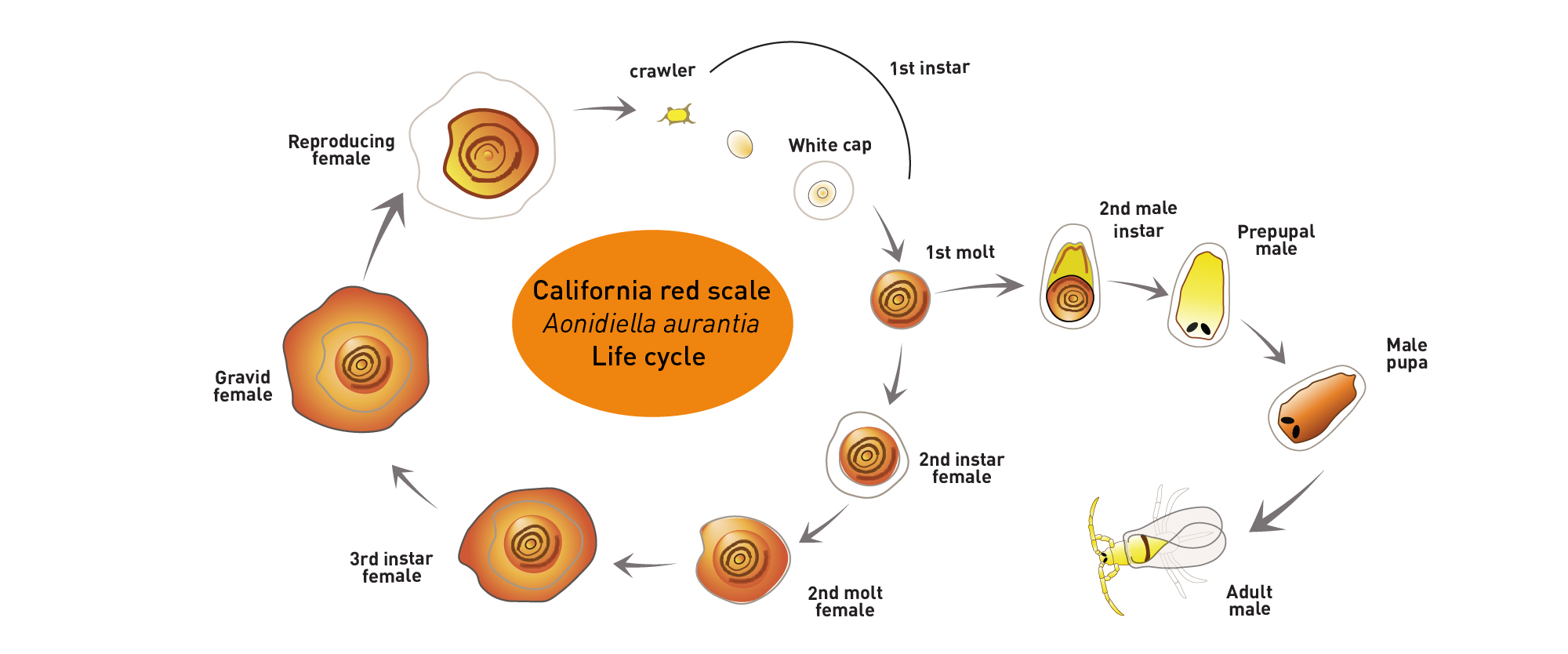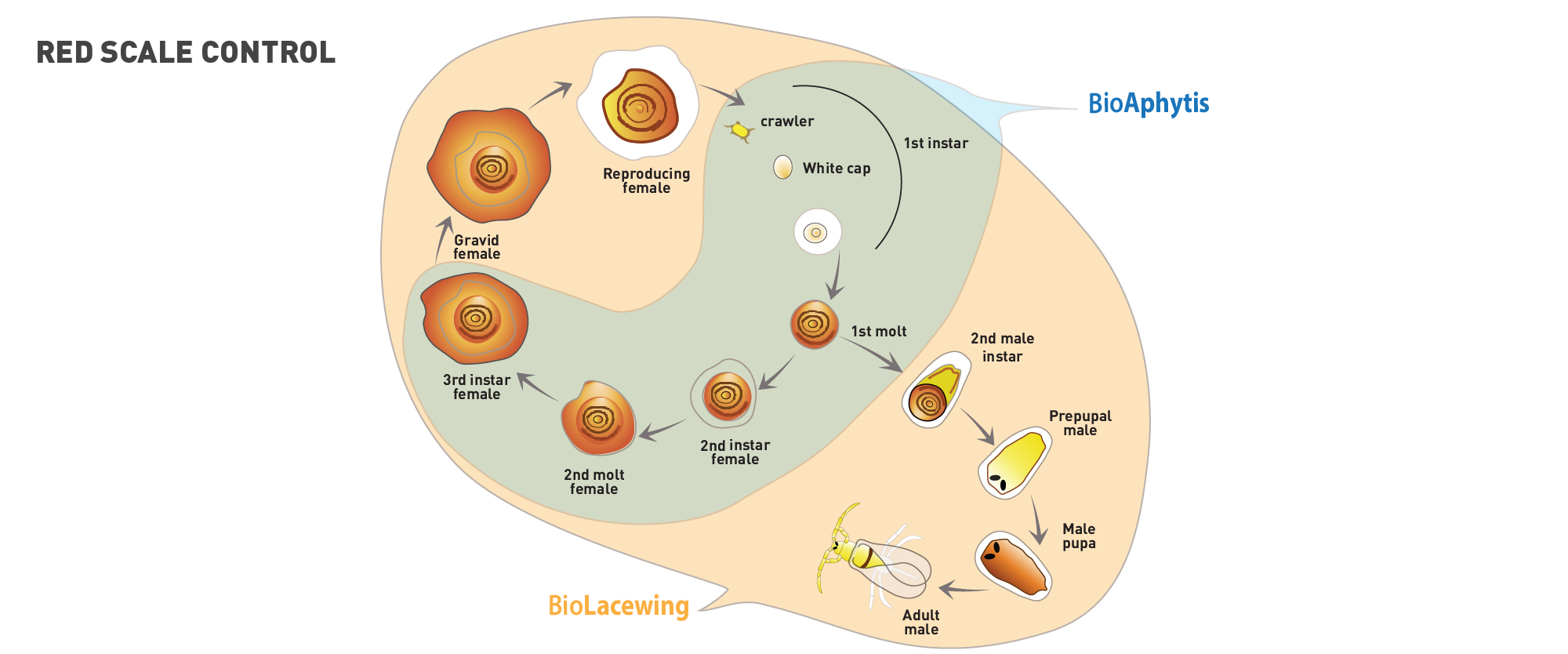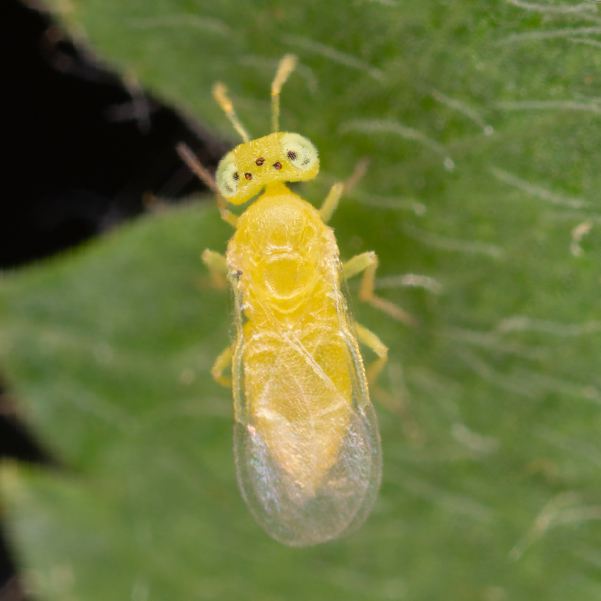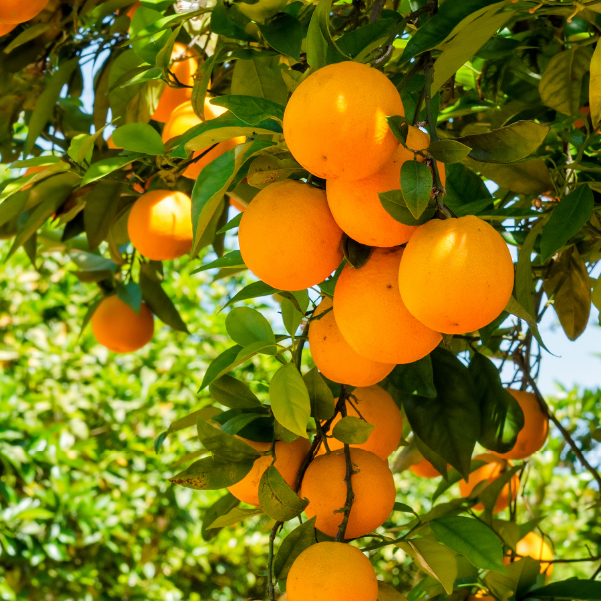The California red scale (Aonidiella aurantia) gets its name from the reddish-brown scale cover it produces for protection. Males and females are visually dimorphic during development; females have a round scale covering them and males have an elongated scale. Male California red scale will emerge from their scale as winged adults (once they have completed their nymphal stages), mate and die within a few hours from emerging. Females will give live birth to around 100 crawlers. The crawlers are then dispersed by wind, birds, mammals or farm workers picking fruit. The crawlers will find a suitable spot and settle there to feed. Red scale has been recorded attacking more than 200 plant species.
Damage
Low levels of California red scale infestation can go unnoticed. At high infestation levels, the California red scale will cause speckling of fruit, discoloration, leaf drop, deformed shoots and severe damage to fruit bearing shoots. In severe instances, fruit might be damaged to the point where it is not marketable. California red scale severe leaf and wood infestation causes defoliation of portions of the tree and may kill all or parts of the branches.
There are specific natural enemies for California red scale.
For more information contact your local BioBee field agent.
